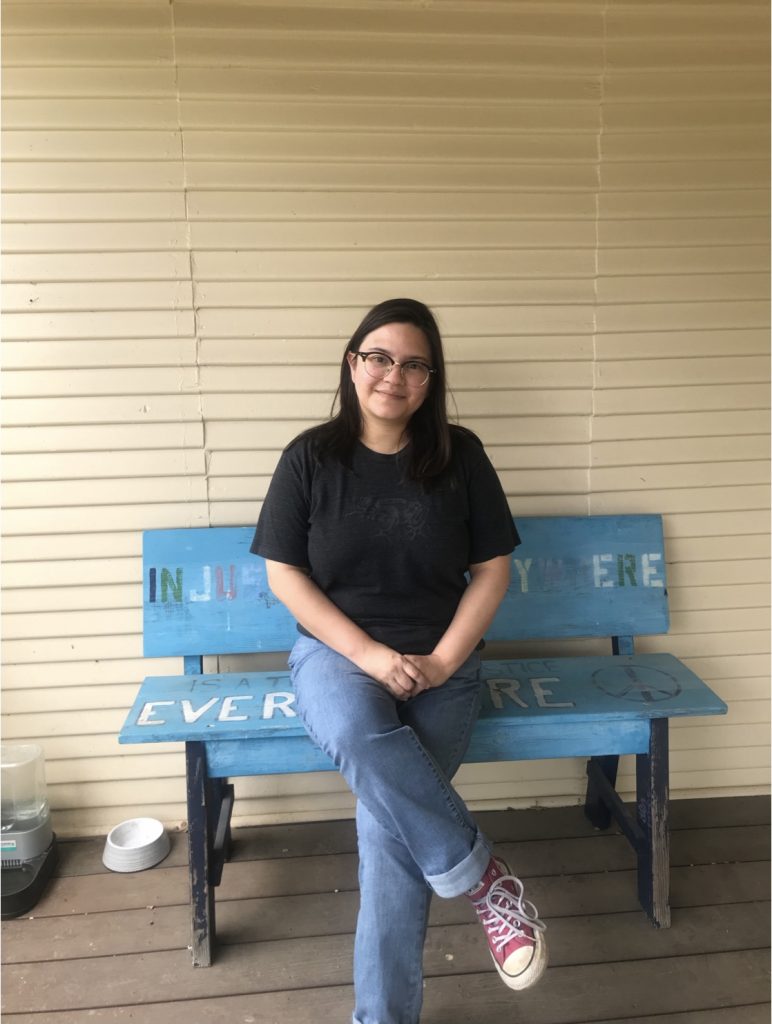by Celia Hughes
May is Healthy Vision Month; established by the National Eye Institute in 2003, to educate people about the risks of ignoring the health of their eyes. The 2023 theme is Healthy Vision: A Family Focus, to inspire families to team up and learn how to protect their vision together. This year’s focus is on caregivers of children and older adults in Hispanic/Latino families, but all ethnic and cultural communities can benefit from this advocacy.
In honor of Healthy Vision Month, we are celebrating one of Art Spark Texas’ longest serving Audio Describers, Diana Payne. Originally from El Paso, Texas, Diana came to Austin to attend St. Edwards University, where she earned a degree in writing and rhetoric. After graduation, she started investigating weird and quirky opportunities where she would be able to put her rhetoric degree to good use. It was a podcast about Audio Description where she heard the opening scene of the Matrix described and became intrigued by the creative and technical aspects of AD. Following a weekend training retreat in North Carolina that sealed the deal, she returned to Austin where, to her delight, she learned that Art Spark Texas has been delivering AD services for years. The rest, as they can say, is history.

Diana started describing video clips for Art Spark through a service called extended description. The video is paused to deliver essential visual information, and it is most prevalent in educational environments. Diana’s first video was a black and white video that she remembers had something to do with groceries. It’s okay that she can’t remember because she has written scripts for hundreds of videos for Art Spark since then!
Just before the pandemic isolation, she started live describing in the Austin theaters. Her first show was Ann, at ZACH Theatre, starring Holland Taylor, and she was “really nervous.” In the beginning, she tended to over describe every little thing, but now she is more relaxed because she has developed her Describer reflexes. These allow her to know when to add information later if she forgets something important, to trust her instincts, and that more is not always better. She has, “gained a sense to let the work describe itself, and small movements may not be important.” But she really likes live describing, because she knows that people are in the audience listening to the description, and she hopes to be making it a more enjoyable experience. Hearing patron feedback is really satisfying, good or critical!
Asked how Audio Description has affected her appreciation of the arts, she said that she often finds herself trying to describe movies in her head, to see what words she can find to make it more understandable and enjoyable. She has a greater appreciation of the work that goes into producing a play; and really thinks about the arts through the lens of description all the time now, which “really excites me.” She actually spends some of her free time listening to described videos and films, because not only is it informative to her professional development, it inspires her to hear how other describers handle different visual information. She also admits that listening to description enhances her personal movie viewing and enjoyment.
Diana offered a few suggestions for people who may be thinking about exploring Audio Description as a vocation or avocation:
- Listen to a lot of Audio Description. Different types, including horror, comedy, drama, documentary, science fiction. Pay attention to language choices for the different genre, intended audience age levels, culture, etc.
- Seek out blind-centered discussions if you are a sighted describer. There are several informative and interesting conversations happening that concern the changing field of Audio Description, that can influence your development as a describer.
- Get professional training! Look for trainers who have several years of audio description experience who co-train with blind or visually impaired individuals.
- It is a rewarding and worthwhile service that takes good training and constant professional development to be good. So don’t give up!
Thank you Diana, for sharing your insights with others and keep describing!
